Taxonomy: Class: Mammalia; Order: Artiodactyla; Family: Cervidae
Description
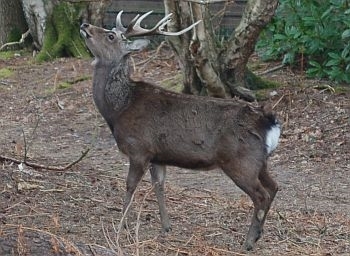
Sika deer © Peter Thompson
The sika deer originates from Japan, Taiwan and the adjacent mainland of eastern Asia. It is intermediate in size between roe and red deer, with a white-spotted coat in summer. The tail is shorter than that of fallow. The sika deer was introduced into deer parks from 1860 onwards. Over the past 150 years many have escaped and bred successfully in the wild, especially in areas of acid soils. They readily hybridise with red deer. Stags may be shot from 1 August to 30 April, hinds from 1 November to 31 March.
Further information:
Mammal Society website sika deer page.
Conservation status and legislation
Status:
UK: Non-native
World: Least Concern (IUCN Red List)
Legislation:
Distribution and abundance
The sika deer is widespread across northern and western mainland Scotland, and in the Scottish Borders. In England, the main concentrations are in Cumbria, Lancashire and Hampshire/Dorset, with many other small scattered colonies. In Ireland, it is found in the north-west, south-east and south-west, although a scarcity of records means that this is not apparent from the map.
Estimates of sika deer abundance (numbers of individuals in the spring) across the UK, from Harris et al. (1995):
Recent trends from the National Gamebag Census
United Kingdom
Index of bag density from 1984 to 2009 (see statistical methods and interpretational considerations).
Error bars represent 95% confidence intervals.
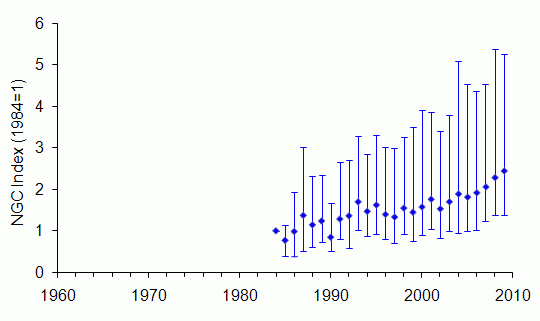
Too few sites reported sika deer to evaluate trends until 1984. There has been a significant increase in the bag index between 1984 and 2009, reflecting the ongoing range expansion and increasing abundance of this introduced species.
Change in sika deer bags over time, with 95% confidence limits (see statistical methods):
| Country |
Sites |
Start
year |
End
year |
Change (%)
1961-2009 |
Change (%)
1984-2009 |
Change (%)
1995-2009 |
| United Kingdom |
59 |
1984 |
2009 |
no data |
161*
64 to 459 |
61*
25 to 109 |
* significant at P < 0.05
England
Index of bag density from 1995 to 2009 (see statistical methods and interpretational considerations).
Error bars represent 95% confidence intervals.
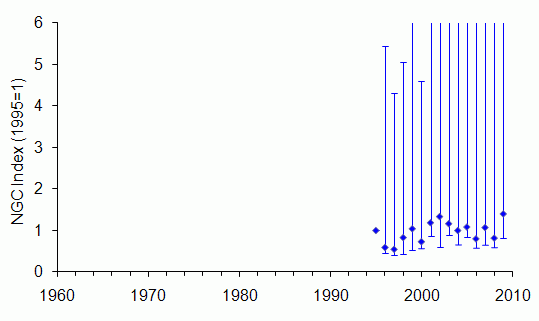
Too few English sites reported sika deer to evaluate trends until 1995. There has been no detectable change in bag index between 1995 and 2009.
Change in sika deer bags over time, with 95% confidence limits (see statistical methods):
| Country |
Sites |
Start
year |
End
year |
Change (%)
1961-2009 |
Change (%)
1984-2009 |
Change (%)
1995-2009 |
| England |
14 |
1995 |
2009 |
no data |
no data |
46
-11 to 1119 |
* significant at P < 0.05
Scotland
Index of bag density from 1984 to 2009 (see statistical methods and interpretational considerations).
Error bars represent 95% confidence intervals.

Two sites reported sika deer between 1961 and 1983. There has been a significant increase in the bag index between 1984 and 2009, reflecting the ongoing range expansion and increasing abundance of this introduced species.
Change in sika deer bags over time, with 95% confidence limits (see statistical methods):
| Country |
Sites |
Start
year |
End
year |
Change (%)
1961-2009 |
Change (%)
1984-2009 |
Change (%)
1995-2009 |
| Scotland |
42 |
1984 |
2009 |
no data |
415*
87 to 1206 |
93*
15 to 263 |
* significant at P < 0.05
Wales
There are too few bag records of sika deer to produce an index graph. 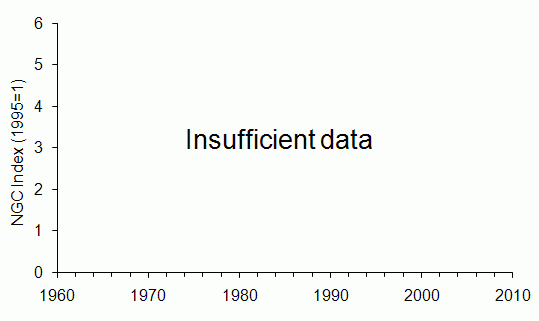
There are too few bag records of sika deer to evaluate rates of change over time
| Country |
Sites |
Start
year |
End
year |
Change (%)
1961-2009 |
Change (%)
1984-2009 |
Change (%)
1995-2009 |
| Wales |
Too few sites |
N Ireland
There are too few bag records of sika deer to produce an index graph. 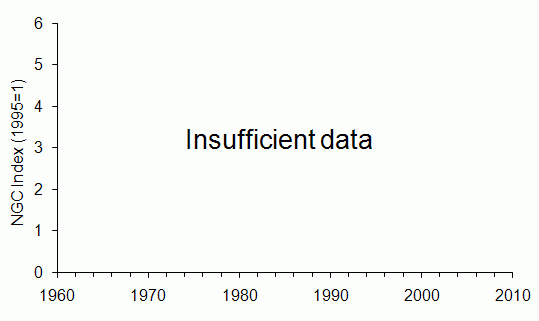
There are too few bag records of sika deer to evaluate rates of change over time
| Country |
Sites |
Start
year |
End
year |
Change (%)
1961-2009 |
Change (%)
1984-2009 |
Change (%)
1995-2009 |
| N Ireland |
Too few sites |
Environmental zones
Change in sika deer bags over time, with 95% confidence limits (see statistical methods):
| Environmental zone |
Sites |
Start
year |
End
year |
Change (%)
1961-2009 |
Change (%)
1984-2009 |
Change (%)
1995-2009 |
| Easterly lowlands (England/Wales) |
11 |
1995 |
2009 |
no data |
no data |
-11*
-15 to -7 |
| Westerly lowlands (England/Wales) |
Too few sites |
| Uplands (England/Wales) |
Too few sites |
| Lowlands (Scotland) |
Too few sites |
| Intermediate uplands/islands (Scotland) |
Too few sites |
| True uplands (Scotland) |
33 |
1995 |
2009 |
no data |
no data |
42
-11 to 103 |
* significant at P < 0.05
Comparison with BBS mammal data
No comparison with the NGC trend is possible because too few sika deer records are received through the Breeding Bird Survey (BBS) organised by the British Trust for Ornithology.
Long-term trend from the National Gamebag Census
There are too few bag records of sika deer to produce a trend starting before 1984.
References and further reading
- Battersby,J. (2005). UK Mammals: Species Status and Population Trends. Joint Nature Conservation Committee/Tracking Mammals Partnership, Peterborough (JNCC download page).
- Deer Initiative (2008). Species Ecology: Sika Deer. England & Wales Best Practice Guides, The Deer Initiative, Chirk (PDF file - 4,466 KB).
- Harris,S., Morris,P., Wray,S. & Yalden,D.W. (1995). A Review of British Mammals: Population Estimates and Conservation Status of British Mammals Other than Cetaceans. Joint Nature Conservation Committee, Peterborough (JNCC download page).
- Harris,S. & Yalden,D.W. (2008). Mammals of the British Isles: Handbook, 4th edition. Mammal Society, Southampton.
- Putman,R. (2000). Sika Deer. Mammal Society & British Deer Society, Southampton & Fordingbridge.
- Ratcliffe,P.R. (1987). Distribution and current status of Sika deer, Cervus nippon, in Great Britain. Mammal Review 17: 39-58.
This report should be cited as: Aebischer,N.J., Davey,P.D. & Kingdon,N.G. (2011). National Gamebag Census: Mammal Trends to 2009. Game & Wildlife Conservation Trust, Fordingbridge (http://www.gwct.org.uk/ngcmammals).
Return to species list